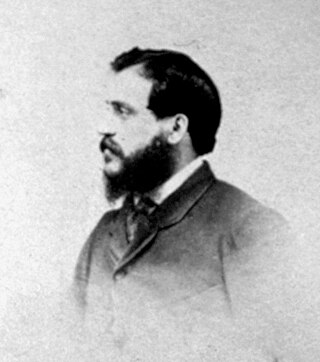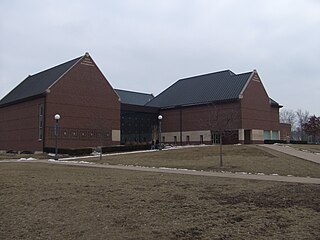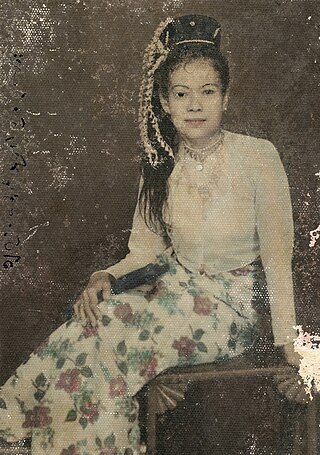Related Research Articles

The Harriman Alaska expedition explored the coast of Alaska for two months from Seattle to Alaska and Siberia and back again in 1899. It was organized by wealthy railroad magnate Edward Harriman. Harriman brought with him an elite community of scientists, artists, photographers, and naturalists to explore and document the Alaskan coast.

Visual anthropology is a subfield of social anthropology that is concerned, in part, with the study and production of ethnographic photography, film and, since the mid-1990s, new media. More recently it has been used by historians of science and visual culture. Although sometimes wrongly conflated with ethnographic film, visual anthropology encompasses much more, including the anthropological study of all visual representations such as dance and other kinds of performance, museums and archiving, all visual arts, and the production and reception of mass media. Histories and analyses of representations from many cultures are part of visual anthropology: research topics include sandpaintings, tattoos, sculptures and reliefs, cave paintings, scrimshaw, jewelry, hieroglyphics, paintings and photographs. Also within the province of the subfield are studies of human vision, properties of media, the relationship of visual form and function, and applied, collaborative uses of visual representations.
Stéphane Sednaoui is a French music video director, photographer, film producer and actor. He has worked in various forms of media, including music videos, photojournalism, portrait photography, fashion and pop culture.

The Haffenreffer Museum of Anthropology is Brown University's teaching and research museum. The museum has a 2,000-square-foot (190 m2) gallery in Manning Hall on Brown's campus in Providence, Rhode Island. Its Collections Research Center is located in nearby Bristol, Rhode Island.

The Peabody Museum of Archaeology and Ethnology is a museum affiliated with Harvard University in Cambridge, Massachusetts, United States. Founded in 1866, the Peabody Museum is one of the oldest and largest museums focusing on anthropological material, with particular focus on the ethnography and archaeology of the Americas. The museum is caretaker to over 1.2 million objects, some 900 feet (270 m) of documents, 2,000 maps and site plans, and about 500,000 photographs. The museum is located at Divinity Avenue on the Harvard University campus. The museum is one of the four Harvard Museums of Science and Culture open to the public.

Felice Beato, also known as Felix Beato, was an Italian–British photographer. He was one of the first people to take photographs in East Asia and one of the first war photographers. He is noted for his genre works, portraits, and views and panoramas of the architecture and landscapes of Asia and the Mediterranean region. Beato's travels gave him the opportunity to create images of countries, people, and events that were unfamiliar and remote to most people in Europe and North America. His work provides images of such events as the Indian Rebellion of 1857 and the Second Opium War, and represents the first substantial body of photojournalism. He influenced other photographers, and his influence in Japan, where he taught and worked with numerous other photographers and artists, was particularly deep and lasting.

The William R. and Clarice V. Spurlock Museum, better known as the Spurlock Museum, is an ethnographic museum at the University of Illinois at Urbana-Champaign. The Spurlock Museum's permanent collection includes portions of collections from other museums and units on the Urbana-Champaign campus such as cultural artifacts from the Museum of Natural History and Department of Anthropology as well as historic clothing from the Bevier Collection of the College of Agricultural, Consumer and Environmental Sciences. The museum also holds objects donated by other institutions and private individuals. With approximately 51,000 objects in its artifact collection, the Spurlock Museum at the University of Illinois at Urbana-Champaign collects, preserves, documents, exhibits, and studies objects of cultural heritage. The museum's main galleries, highlighting the ancient Mediterranean, modern Africa, ancient Egypt, Mesopotamia, East Asia, Oceania, Europe, and the Americas, celebrate the diversity of cultures through time and across the globe.

The Museum of Cultures in Basel is a Swiss museum of ethnography with large and important collections of artifacts, especially from Europe, the South Pacific, Mesoamerica, Tibet, and Bali. It is a Swiss heritage site of national significance.

The California Museum of Photography is an off-campus institution and department within the College of Humanities, Arts, and Social Sciences at the University of California, Riverside, located in Riverside, California, United States.
Linda Connor is an American photographer living in San Francisco, California. She is known for her landscape photography.
The Visual Resources Association is an international organization for image media professionals.
Mario Algaze was a Cuban-American photographer who photographed musicians and celebrities, in rural and urban areas, throughout Latin America.

Palm-leaf manuscripts are manuscripts made out of dried palm leaves. Palm leaves were used as writing materials in the Indian subcontinent and in Southeast Asia dating back to the 5th century BCE. Their use began in South Asia and spread to other regions, as texts on dried and smoke-treated palm leaves of the Palmyra or talipot palm. Their use continued until the 19th century when printing presses replaced hand-written manuscripts.
The Birth of Coffee is a transmedia project which includes a book of words and images, a photographic exhibit, and a website. It focuses on the people worldwide who grow and produce coffee. The project illustrates how coffee – combined with the volatile locations where it grows and labor-intensive growing processes – often shapes those people's lives.

Daniel Lorenzetti is an American author, documentary photographer and explorer. He is also a frequent speaker on the subject of entertainment innovation specifically in the area of Transmedia and Collaborative Storytelling.
Lonnie Graham is a fine art photographer, professor, installation artist, and cultural activist investigating the methods by which the arts can be used to achieve tangible meaning in peoples lives. He is Professor of Visual Art at Pennsylvania State University in University Park, near State College, Pennsylvania. He has been the executive director of PhotoAlliance since August 2019. In January 2013, Graham spoke at the TEDxPSU symposium. His talk is available for streaming through YouTube.

The New Hampshire Historical Society is an independent nonprofit organization that saves, preserves, and shares the history of New Hampshire. The organization is headquartered in Concord, the capital city of New Hampshire.
Philip Adolphe Klier, also known as Philip Klier, was a German photographer, who arrived in Burma as a young man around 1865 and spent the rest of his life there. Mainly working as self-trained photographer and businessman, Klier took hundreds of photographs at the end of the 19th century during the British colonial period in Burma. His photographs, taken both in his studio as well as on location, were mainly sold as picture postcards for foreign visitors. They have also been published in several books and collected in public archives. Among a small number of other photographers, Klier is considered as one of the earliest professional photographers in the history of today's Myanmar.

Lukas Birk is an Austrian photographer, archivist, and publisher. He is mainly known for his visual archive work in Myanmar and research on Box Camera photography in Afghanistan. Birk has worked on photographic projects, films and visual research in China, South and Southeast Asia and the Indian subcontinent. He has published numerous books on visual culture and photographic history.

Myanmar Photo Archive is both a physical archive of photographs taken between 1889 and 1995 in Myanmar (Burma), and a public awareness project of the country's visual culture. The MPA presents exhibitions, online resources, public events, and publishes books on the history of photography in Myanmar and former Burma. The collection holds more than 30,000 images and other related materials, and is the largest archive for Myanmar's photographic history.
References
- ↑ John Ferri (2000). "Good Grind". New Times Broward-Palm Beach . Archived from the original on September 19, 2016. Retrieved December 16, 2023.
- ↑ "Image Expedition About' page".
- 1 2 "'The Birth of Coffee,' Image Expedition site".
- ↑ South Florida Cultural Consortium's list of past award recipients.
- 1 2 3 4 "The Vanishing Cultures", Arts and Entertainment section of The Palm Beach Post , May 31, 1998.
- ↑ Collecting Visual Artifacts, IX/Lighthouse Press, 1998.
- ↑ "Image Expedition 'Projects' page". Archived from the original on April 6, 2001. Retrieved December 16, 2023.
- ↑ Sponsors page from the Image Expedition website.